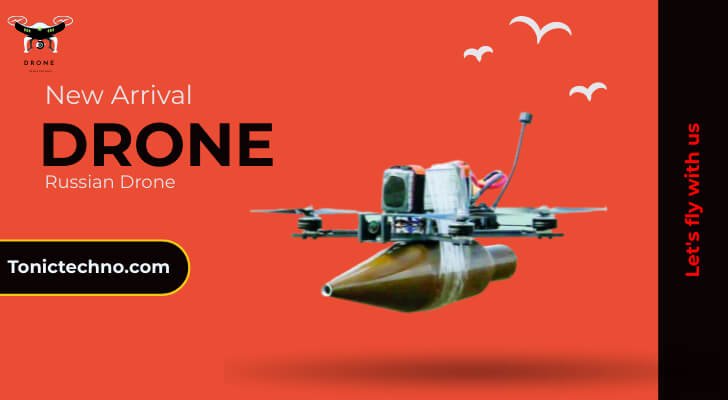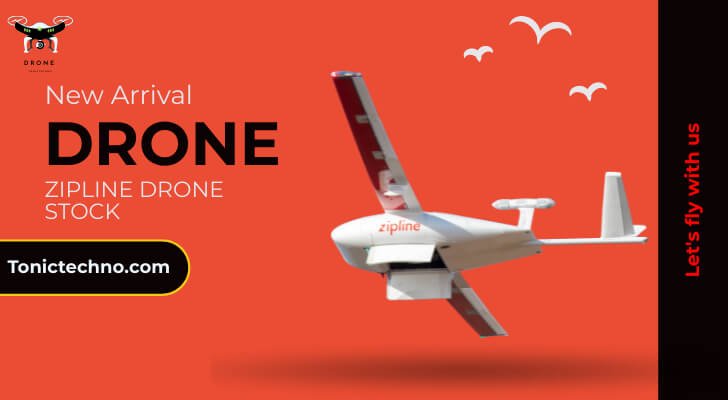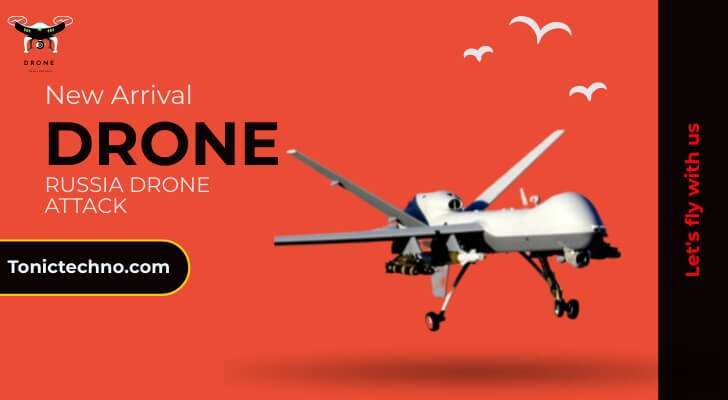In recent years, drones have become an essential part of technological advancements across the globe. From military to civilian applications, uncrewed aerial vehicles (UAVs) reshape industries and the battlefield. Russia, a key player in global drone development, has made significant strides in creating cutting-edge drone technology. This article explores Russia’s journey in drone technology, highlighting its military innovations, civilian uses, and the global implications of its UAV advancements. We will also look closely at Russia’s challenges and offer tips on leveraging these innovations in various sectors.

Overview of Russian Drone Technology
Russia has been steadily advancing in drone technology over the past decade. Unlike other countries, Russia has focused on both military and civilian drone applications. A mix of government initiatives, state-owned defense companies, and private enterprises backs the development of Russian drones. Russian drones are known for their durability, reliability, and ability to perform in harsh conditions. These drones have advanced sensors, long-lasting batteries, and secure communication systems, making them ideal for combat and surveillance operations. Some of the most notable drones developed by Russia include the Orlan-10 and the Altius.
The Orlan-10 is primarily used for reconnaissance and surveillance, providing real-time video feed to operators. Conversely, the Altius is a high-altitude drone designed for both reconnaissance and precision strikes. In addition to military drones, Russia has also made progress in civilian UAV technology, used in industries such as agriculture, logistics, and environmental monitoring.
Historical Development of Russian Drones
Russia’s drone development started slowly in the early 2000s. The country faced challenges such as a lack of advanced technology and competition from more established nations. However, things began to change with the increased focus on unmanned aerial systems (UAS) in the 2010s. In the early stages, Russia’s drones were used mainly for surveillance and reconnaissance. By 2014, however, Russia had begun to build more sophisticated drones, moving into areas of combat, search-and-rescue operations, and even precision strikes against enemy positions. The turning point came in 2015 when Russia began testing drones in combat zones.
These tests were focused mainly on the Orlan-10, which became an essential tool for military operations in places like Syria. Its ability to conduct surveillance and provide live video feeds proved invaluable to Russian forces. Since then, Russia has invested heavily in UAV technology, with several new drone models entering production and service in the Russian military. Moreover, Russia has increased collaboration with international partners to improve its drone capabilities further.
Read More: Navigating the Best Zipline Drone Stock Market
Military Drones in Russia
Russia’s military drone capabilities are among the most advanced in the world. With drones such as the Orlan-10, Altius, and Orion-E, Russia has created versatile UAVs capable of performing various roles in military operations.
- Orlan-10: One of Russia’s most well-known drones, the Orlan-10, is primarily used for surveillance and reconnaissance. It can fly for up to 18 hours and carry a range of cameras, sensors, and communications equipment. Its real-time video feed provides military commanders valuable intelligence on enemy positions, troop movements, and battlefield conditions.
- Altius: The Altius is a high-altitude UAV designed for reconnaissance and precision strikes. It can fly at altitudes of up to 10,000 meters and is equipped with advanced imaging systems and radar for target identification. The Altius is especially effective for conducting surveillance over large, hard-to-reach areas.
- Orion-E: This drone can carry surveillance equipment and weapons. With a range of up to 250 km, it can provide real-time intelligence and conduct precision strikes against enemy targets. The Orion-E is quickly becoming a standard in Russian military operations, especially in regions like Ukraine.
These drones are designed to offer tactical advantages on the battlefield. They provide critical intelligence, enhance operational efficiency, and allow for precise strikes with minimal risk to human life.
Civilian and Commercial Drone Usage in Russia
Russia’s investment in drone technology isn’t just for military purposes. Civilian applications of drones have also become a priority. These drones are used for various purposes, such as agriculture, logistics, search and rescue, and environmental monitoring.
- Agriculture: In Russia, drones are increasingly used to monitor crops, assess soil health, and apply fertilizers and pesticides. This helps farmers reduce costs and increase productivity.
- Logistics: Drones are being tested for their potential in the logistics industry, including delivering packages and monitoring transport routes. They offer an efficient and cost-effective solution for last-mile delivery, especially in remote or difficult-to-access areas.
- Search and Rescue: Drones are used in search-and-rescue operations to locate missing persons or monitor disaster zones. Their ability to access hard-to-reach areas and provide real-time data can significantly speed up rescue efforts.
- Environmental Monitoring: Drones also play a key role in monitoring environmental changes, such as deforestation, pollution, and wildlife tracking. Their ability to cover vast areas makes them invaluable in protecting the environment.
Despite their growing popularity, Russian drones are subject to government regulations that restrict their use in some regions. However, ongoing advancements in technology are likely to push for more widespread civilian drone operations in the future.
Read More: The Growing Impact of Ukraine Drone Attack: A Personal Perspective
Challenges Faced by Russian Drone Programs
While Russia has made significant progress in drone technology, several challenges remain. These include technological limitations, economic constraints, and geopolitical factors.
- Technological Limitations: Russia still faces difficulties with artificial intelligence (AI), sensors, and battery life. While Russian drones are reliable, they often fall short of their Western counterparts in terms of technological sophistication.
- Economic Constraints: Sanctions and economic difficulties have impacted Russia’s ability to acquire advanced technology from other countries. This has slowed the production of high-tech drone components, which are essential for keeping up with global competition.
- Geopolitical Factors: Russia’s drone program is also affected by geopolitical tensions. For instance, international sanctions have hindered the country’s ability to import key materials and components. Furthermore, Russian drones are often seen as a security threat by other nations, resulting in diplomatic challenges.
Despite these challenges, Russia remains committed to overcoming these obstacles and pushing forward with its drone initiatives.
Russia’s UAV Strategies and Future Plans
Russia’s UAV strategy focuses on increasing domestic drone production, improving technology, and expanding its use in both the military and civilian sectors.
- Investment in Artificial Intelligence: Russia heavily invests in AI to enhance its drones’ autonomy. With AI, drones can conduct missions with little to no human intervention, making them more efficient and capable of handling complex tasks.
- International Collaboration: Russia collaborates with international partners to boost its drone capabilities. This includes research collaborations and joint development projects with countries like China and India.
- Expanding into Global Markets: Russia is also looking to expand its drone market beyond its borders. With the growing demand for military and commercial UAVs, Russia is positioning itself as a leading player in the global drone industry.
As Russia continues to refine its UAV technology, we can expect more advanced models with longer ranges, better sensors, and improved autonomy in the coming years.
Tips for Leveraging Russian Drone Innovations
Russia’s drone advancements offer businesses, governments, and enthusiasts unique opportunities. Here are some tips for leveraging Russian drone innovations:
- For Businesses: Collaborate with Russian companies that produce civilian drones, especially in agriculture, logistics, and environmental monitoring. The cost-effectiveness of these drones makes them an attractive option for businesses looking to improve their operations.
- For Governments: Consider adopting Russian military drones for non-combat uses, such as surveillance, border patrol, and disaster response. Russian drones are reliable and provide valuable intelligence at a fraction of the cost of human-crewed aircraft.
- For Enthusiasts: Study the designs of Russian drones and experiment with building similar models. Russian drones have robust designs and offer valuable lessons in durability and functionality.
Read More: Ukraine Drone Revolution: How These Machines Are Changing Modern Warfare Forever
Global Implications of Russian Drone Advancements
Russia’s progress in drone technology is shaping the future of global UAV development. As Russia continues to enhance its capabilities, it will likely influence international drone policies and military strategies.
- Geopolitical Dynamics: The rise of Russian drones adds a new layer to the geopolitical landscape. As more countries invest in UAVs, the nature of warfare and international relations will evolve.
- Drone Warfare: Russia’s use of drones in warfare, especially in regions like Ukraine, highlights the growing role of UAVs in modern combat. This may lead to increased adoption of drones in military operations worldwide.
- International Regulations: As drones become more common, global regulations will need to govern their use. Russia and other countries will play a key role in shaping these regulations.
FAQ
What are Russian drones used for?
Russian drones are used for surveillance, combat, and intelligence gathering. They play a key role in modern warfare.
How advanced are Russian drones?
Russian drones feature advanced technologies like AI, stealth systems, and long endurance, making them highly competitive.
What challenges do Russian drones face?
Challenges include reliance on imported components, cybersecurity risks, and high production costs.
How do countries counter Russian drones?
Countries use electronic warfare, anti-drone systems, and cybersecurity measures to neutralize drone threats.
What is the future of Russian drones?
Future drones are expected to be more autonomous, efficient, and potentially used for civilian applications.
Conclusion
Russia’s drones have changed the landscape of modern warfare. From advanced surveillance to precise combat capabilities, these UAVs showcase the power of innovation. However, challenges like sanctions and cybersecurity risks remain significant hurdles. The global impact of Russian drones continues to grow, influencing military strategies and sparking debates about ethics and security. As technology evolves, drones will likely play an even more significant role in military and civilian life. Russia’s advancements remind us of the importance of staying informed about these developments and their implications for the future.


